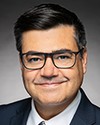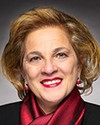Thank you very much.
I want to thank the committee again, on my behalf and that of the National Audubon Society, for inviting me to talk to you about the Christmas bird count.
The Christmas bird count was started in 1900 by a gentleman named Frank Chapman at the American Museum of Natural History. There was a growing awareness of the need for the conservation of wildlife at the time, because wildlife supplies were dwindling rapidly due to both overhunting and also the millinery trade where feathers were used in ladies' fashion.
What Frank Chapman was able to do, because he had his own magazine called Bird-Lore, was call to do a Christmas bird count rather than a Christmas bird hunt during the holiday season. In 1900, the first Christmas bird count was done. There were 27 people involved in 25 locations across the continent. Two of those counts were done in Canada, including in Toronto, and counts have been done every year throughout the continent and internationally.
After the 27 participants and 25 counts the first year, we have now grown to over 2,600 different counts across the hemisphere with major contributions from Colombia, Mexico and throughout Latin America and the Caribbean in addition to Canada. Each count is locally organized by a compiler. It's done within a 24-kilometre circle on one calendar day during the dates of December 14 to January 5 each season. All of any age, ability or experience are welcome to participate.
When I became in charge of the program in 1987, it was a 100% paper program. There was no database at that point. The end result was a 700-page printed issue that included all of the results of every Christmas bird count that had been submitted for that season. In 1998 and 2000, Audubon joined with the lab of ornithology and also got a major grant from the National Science Foundation to create what was then called BirdSource.
BirdSource has evolved into what is now, as Chris mentioned, eBird. We needed a core database to begin the structure of BirdSource, and creating the 100-year database for the Christmas bird count became the database that is now the core of the structure of eBird.
Around the same time, around the turn of the 21st century, we also joined with Birds Canada to manage the Christmas bird count in Canada. Since then, it's been very successful, and participation in Canada has grown 40% since Birds Canada joined on.
Until about the 1980s, scientists were reluctant to accept citizen science datasets as valuable for analysis. The combination of the Christmas bird count and the breeding birds survey as long-term datasets enabled ornithologists to realize that there was a lot of very important information about learning trend data about birds across the continent. That's what many scientists are doing now. There are over 300 peer-reviewed papers utilizing Christmas bird count datasets, and we get inquiries weekly from researchers to use the CBC.
One of the key things that helped the acceptance of citizen science data was that Audubon and Patuxent Wildlife Research Center developed a toolset to analyze citizen science datasets, not just ornithological datasets but citizen science datasets in general, so those techniques were adaptable to citizen science in all fields, some of which you'll hear more about today.
The combined trend data for CBC and the breeding birds survey has led to a lot of very important studies. COSEWIC in Canada and the United States government, for watch-lists on the red list, utilize both the Christmas bird count and the breeding birds survey to come up with the trend data on a continental basis.
The other thing about the Christmas bird count that's really interesting is that we have been able to track how birds respond to climate change as their ranges have been shifting over the last 75 years. Birds are excellent indicators of the quality of the environment and the health of the environment that we all share.
One of the key things that's kept the Christmas bird count relevant is that it becomes a holiday tradition for everybody involved. People travel great distances to do the Christmas bird counts. It's a major passion to see not only the birds in the areas where they're counting but also their long-time friends that they may only see during the CBC period. People get a sense of community and a sense of place, as well as a sense of the birds that are there.
Citizen science datasets and contributions of citizen scientists in all fields are a comprehensive and free resource for researchers in many fields, including studies by the federal governments of Canada and the United States.
With that, I think I will end.
Thank you very much.



